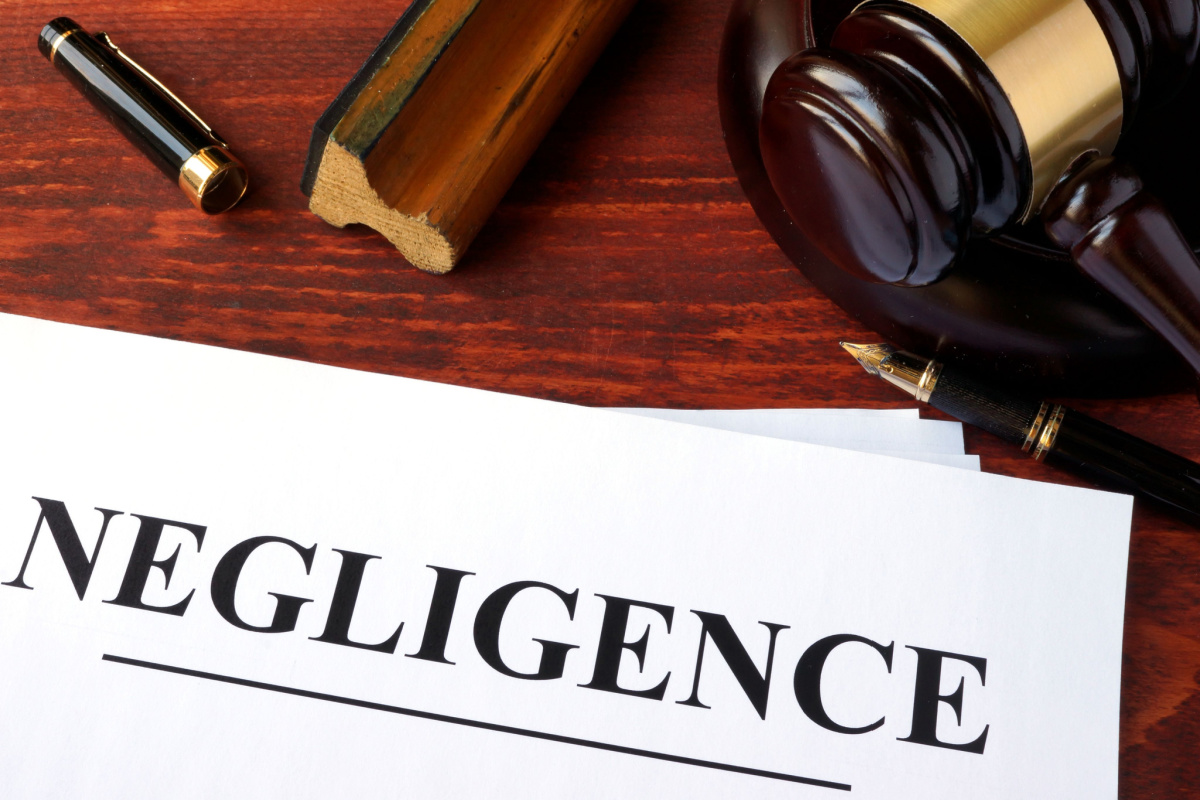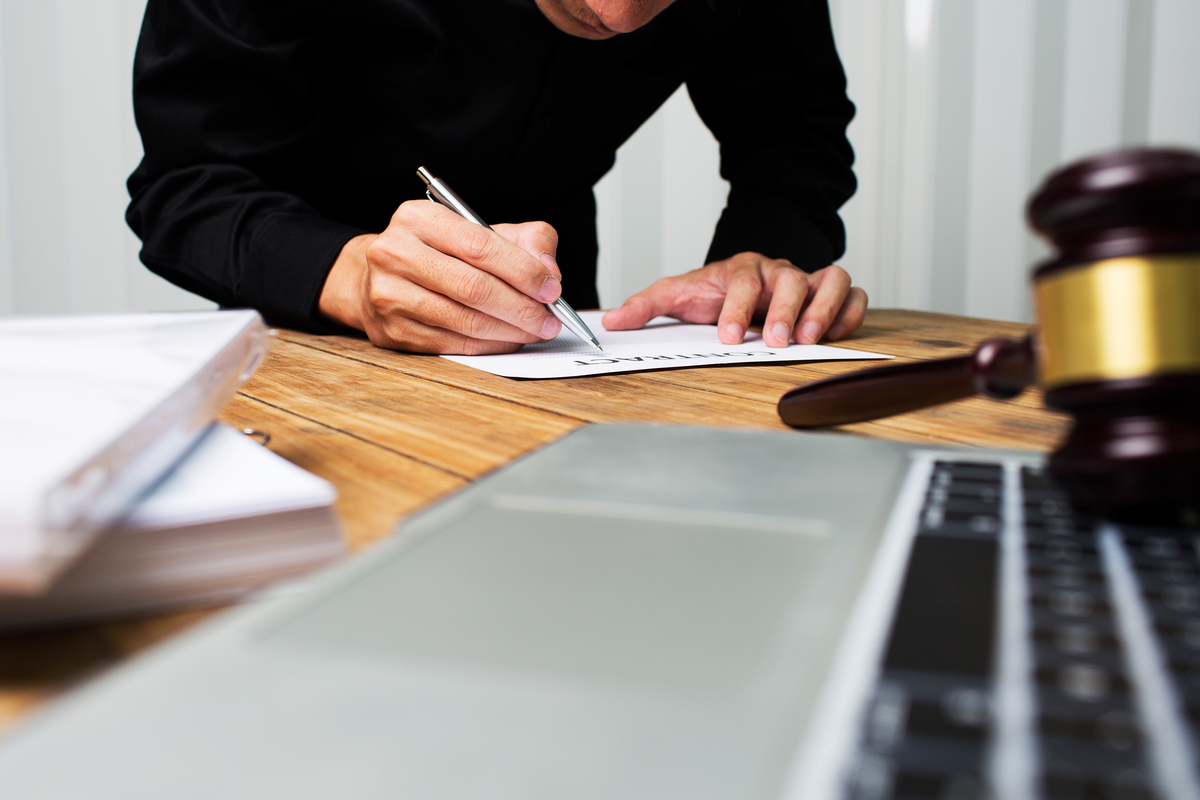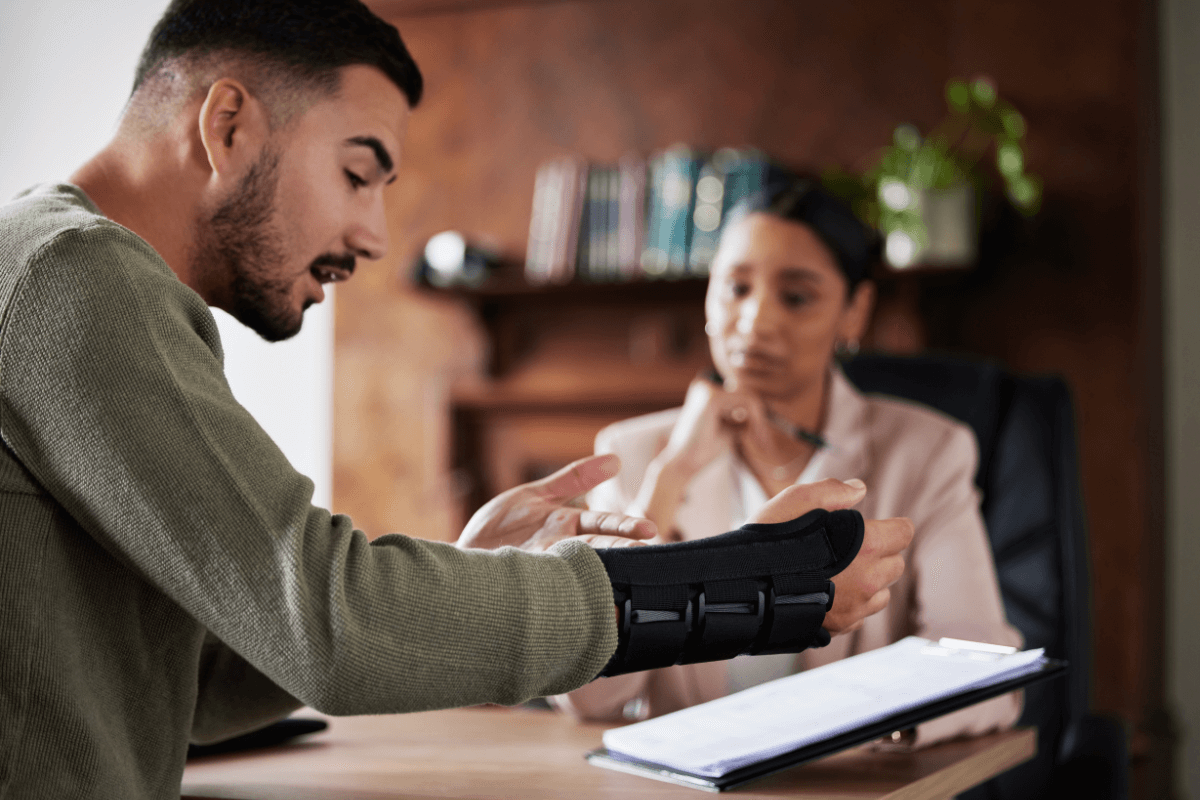
In 2019, a woman, Gemma Brushett, was injured while crossing a busy street. She claimed that the cyclist, Robert Hazeldean, failed to yield and hit her, causing her serious injuries. However, it was later discovered that the woman was texting and not paying attention to her surroundings at the time of the accident.
Such a case is an example of comparative negligence, a legal principle that can greatly affect the outcome of personal injury cases. The concept of comparative negligence is based on the idea that both parties involved in an accident may have contributed to the cause of the injury.
What Is Comparative Negligence?
Comparative negligence is a legal concept used to determine the degree of responsibility each party holds in an accident or injury. It’s typically used in personal injury cases where the plaintiff seeks compensation for damages or injuries caused by the defendant.
In such a case, the court evaluates the actions of each party and assigns a percentage of fault to each person. The court will consider some factors, including the degree of fault or negligence on each party’s part. This percentage of fault is then used to determine the amount of compensation each person is responsible for paying.
For example, if the defendant is found to be 70% responsible for an accident and the plaintiff 30% reliable, the defendant would only be responsible for paying 70% of the damages.
Types of Comparative Negligence
The type of comparative negligence that applies in a case depends on the state in which the accident occurred and the case’s specific facts.
There are two types of comparative negligence:
Pure comparative negligence
The pure comparative negligence principle allows a plaintiff to recover damages even if they are primarily at fault for the accident. The goal of this type of negligence is to fairly allocate responsibility for an accident based on the degree of fault of each party.
Under this rule, a plaintiff only recovers damages for the portion of fault they are not responsible for, even if it’s a small percentage. For example, if a court finds that a plaintiff is 99% at fault and the defendant is 1% at fault, the plaintiff can still collect damages, but only for the 1% they are not at fault for.
States like Louisiana, Florida, California, and New York follow the pure comparative negligence rule.
Modified/partial comparative negligence
Most states follow this principle. It involves barring the plaintiff’s recovery based on the degree of fault. There are two kinds of modified comparative negligence:
- The 50% bar rule
Under this rule, if a person’s negligence is to be 50% or more responsible for an injury, they are barred from recovering any damages from the other party (ies).
- The 51% bar rule
This rule is similar to the 50% bar rule, but a person can still recover damages if their negligence is less than 51% responsible for their injury. In such cases, the amount of damages will be reduced in proportion to their degree of fault.
How Does It Affect a Personal Injury Case?

Comparative negligence can significantly impact the outcome of a personal injury case. That’s because the plaintiff may not get what they were seeking or may only receive a portion of it if they are found to be partially at fault for the accident.
Moreover, the defendant may also be responsible for some damages, even if the plaintiff was mostly at fault. In some cases, comparative negligence can impact the credibility of the witnesses and evidence presented because both sides will strive to prove their innocence and allocate fault to the other party.
Here is how it works:
- Determining fault: The first step in a personal injury case is determining who is at fault for the accident. If the plaintiff contributed to the accident in any way, their degree of fault is assessed.
- Calculating damages: Once the fault has been determined, the next step is calculating the damages award. If the plaintiff is partially at fault, their damages award will be reduced by their percentage of fault.
- Allocation: Once the degree of fault for each party has been determined, the damages award will be allocated accordingly.
Since both parties have to prove their side of the case and demonstrate their degree of fault, the application of comparative negligence can also result in a longer and more complex trial process. These factors make it important for both parties in a personal injury case to have a solid understanding of comparative negligence and its impact on the case.
When Can I Still Claim Compensation Even if I Am Partly at Fault?
In some jurisdictions, like Louisiana, a plaintiff can claim compensation even when at fault. Louisiana has a pure comparative negligence system, which means the complainant can recover compensation as long as they are not found to be 100% at fault for the incident.
Under the Louisiana Civil Code CC 2323, a person is only partially responsible for an accident or injury if they could have done something to prevent it but did not. Even if the person is at fault in some way, they are still entitled to a portion of the compensation awarded to the victim. The only exception to the rule is if the other party intentionally causes the accident.
It’s essential to keep in mind that the laws regarding fault and compensation can vary by jurisdiction, so it’s best to consult with a qualified legal professional to understand the rights and options in a specific case.
Louisiana’s Statute of Limitations for Personal Injury Claims
A statute of limitation is the deadline for a victim to file a personal injury claim. In Louisiana, the statute of limitations for personal injury claims is one year from the date of the incident. The legal action taken should be one year from:
- The date of the accident; or
- The date the plaintiff reasonably discovered the injuries
It’s important to note that there are some exceptions to this general rule, such as in cases involving minors or claims against the government. In such cases, the statute of limitations may be extended, or different rules may apply.
For those unfamiliar with the intricacies of personal injury claims, it’s beneficial to delve deeper into what constitutes a valid personal injury claim. Recent incidents, such as the Fitbit recall due to burn hazards, highlight the importance of understanding the potential dangers in everyday products.
Moreover, even in construction, the significance of blueprints and the associated dangers at construction sites cannot be overlooked. For a broader perspective on legal matters, one can explore the legal advice section or even delve into various class action lawsuits that have been filed over the years.
If you have been dealing with a personal injury case, contact Alvendia Kelly & Demarest today at 504-200-0000 to schedule a free consultation.
Categories
- Bicycle Accidents
- Car Accident
- Case results
- Class Action
- Community Aid
- COVID-19
- Fun
- General
- Hard Rock Lawsuits
- Holiday
- Insurance Claims
- Legal Advice
- Mardi Gras Accident Attorney
- Mass Tort
- Medical
- Motorcycle Accident
- Personal Injury
- Practices
- Premise Liability
- Recent News
- Safety
- Truck Accidents
- Uncategorized
- Weather
- Work-Related Accident

In 2003, after being dissatisfied with the quality of legal care for victims of car accidents, Roderick ‘Rico’ Alvendia sought to establish a new firm focused on providing high-quality legal services to aid injured victims and their families. J. Bart Kelly, sharing Rico’s passion for upholding justice, joined the firm later that year, and established a partnership.






